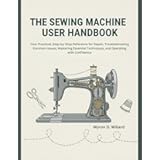Crafting Innovative Homemade Gadgets: Insights for Advanced DIY Enthusiasts
Does the concept of fabricating custom tools and functional devices from fundamental components intrigue you? The video above showcases foundational elements for constructing various homemade gadgets. This exploration delves into the technical intricacies and broader applications of these core parts, extending beyond the brief visual presentation. A nuanced understanding of these components is paramount for effective DIY electronics and advanced prototyping endeavors.
The journey into creating DIY crafts often commences with specific components. Their proper selection is critical. Furthermore, their integration into a coherent system demands technical acumen. This article provides detailed insights. It focuses on several key items. These items were highlighted in the accompanying video. Consequently, a deeper understanding of their potential is offered.
The Miniature Air Pump: A Foundation for Pneumatic Innovation
The “MINI AIR PUMP PM201U” is a particularly versatile component. It operates at 3.0VDC. Its current draw is 130mA. This compact device generates 300mmHg of pressure. Such specifications denote its suitability for low-power applications. It is often employed in portable systems. The air pump acts as a miniature engine. It is capable of moving air or creating a vacuum.
Applications for this mini air pump are diverse. It may be integrated into small pneumatic systems. These systems include automated dispensing mechanisms. Furthermore, it serves well in portable lab equipment. Think of microfluidics or gas sampling. The pump’s precise specifications are crucial. They dictate power supply requirements. They also influence potential project scope. Its inclusion facilitates numerous creative homemade gadgets. This extends the functionality of many maker projects.
Consideration of pump characteristics is vital. The pressure rating (300mmHg) indicates its force. The voltage (3.0VDC) dictates power sources. A stable power supply is always required. Control circuitry must also be designed. This ensures optimal operation. Moreover, its efficiency and lifespan are dependent on proper usage. Therefore, thorough planning before implementation is advised.
Illumination and Indication: The Blue LED
A “BLUE LED” serves more than just an aesthetic purpose. Light-Emitting Diodes are fundamental electronic components. They convert electrical energy directly into light. Their inclusion in DIY electronics projects is ubiquitous. LEDs function as indicators. They show operational status. Additionally, they provide illumination. This could be for small work areas.
Integration of an LED requires careful attention. A current-limiting resistor is always necessary. This protects the diode from excessive current. Failure to include one will cause damage. Polarity must also be observed. LEDs are unidirectional devices. Incorrect connection prevents light emission. Consequently, circuit design for LED usage is straightforward. It is a vital skill for DIY crafts.
Beyond simple indication, blue LEDs possess unique properties. Their specific wavelength can be useful. For instance, it is used in some curing processes. It also finds application in scientific instruments. Therefore, a blue LED is not merely a light source. It is a precise tool within a circuit. Its presence enhances both functionality and user feedback.
Portable Precision: The 5V Soldering Heater
The “5V SOLDERING HEATER FROM EBAY” signifies a trend. Portable and low-voltage tools are increasingly popular. This heating element is typically the core of a compact soldering iron. It allows for component attachment and repair. Its 5V operation is significant. It implies compatibility with USB power banks or small battery packs. This facilitates fieldwork or mobile prototyping.
Deployment of such a heating element necessitates forethought. The current draw can be substantial. A robust power source is required. It prevents voltage drops. Furthermore, thermal management considerations are paramount. Adequate insulation and a heat-resistant handle are essential. Safety protocols must always be observed. These portable units offer immense convenience. They support intricate work away from a bench. This makes them ideal for various homemade gadgets projects.
This component functions like a miniature, mobile forge. It melts solder to create electrical bonds. The quality of these connections is vital. It impacts the longevity of electronic assemblies. Consequently, proper technique must be applied. Selection of appropriate soldering tips is also crucial. Different tips are suited for different component sizes. Therefore, this heater is a critical tool for any serious DIY electronics enthusiast.
Conduit for Pressure: The Air Hose
An “AIR HOSE” serves as the circulatory system. It connects the air pump to other pneumatic components. These include actuators or nozzles. The hose’s properties are critical. Its diameter influences flow rate. Material flexibility affects installation. Pressure rating determines its safe operating limits. Proper selection ensures system efficiency and reliability.
The air hose acts as a vital link. It channels compressed air or vacuum. This allows for mechanical work at a distance. Consider its use in dispensing systems. It might deliver precise amounts of liquid or gas. It also supports small robotic grippers. Airtight connections are essential. Leaks compromise system performance. They also reduce efficiency. Thus, correct fittings and secure attachments are mandatory.
Moreover, the hose material should be chosen carefully. It must withstand operational pressures. It should also resist environmental factors. For example, some materials degrade under UV light. Others are affected by chemicals. Consequently, the air hose is not a mere accessory. It is an integral engineering component. Its specifications are as important as the pump itself. This ensures robust homemade gadgets.
The Hackscribe: Precision in Custom Tooling
The “HACKSCRIBE FOR HACKS” points towards a dedication to custom tooling. A hackscribe is a precision marking tool. It is often created or modified by makers. Its purpose is to score or engrave materials. This allows for accurate cuts or detailed surface work. The term “hacks” implies innovative, often unconventional, applications. Such tools are invaluable for intricate DIY crafts.
The utility of a hackscribe is broad. It facilitates precise scoring of PCBs. This helps in circuit board modification. It also marks metals or plastics for cutting. Furthermore, it creates decorative engravings. The material of the tip is a key factor. Hardened steel or carbide tips are common. They offer durability and sharp lines. Ergonomics of the handle are also considered. This ensures user comfort and control.
This custom tool exemplifies the maker ethos. It prioritizes functionality and adaptation. It transforms generic tasks into specialized operations. A hackscribe is more than a simple scratch awl. It is an instrument of precision. It enables meticulous modifications. These modifications enhance the quality of homemade gadgets. Its creation is a DIY electronics project in itself. Such bespoke tools elevate the craft. They allow for complex designs and refined finishes.







